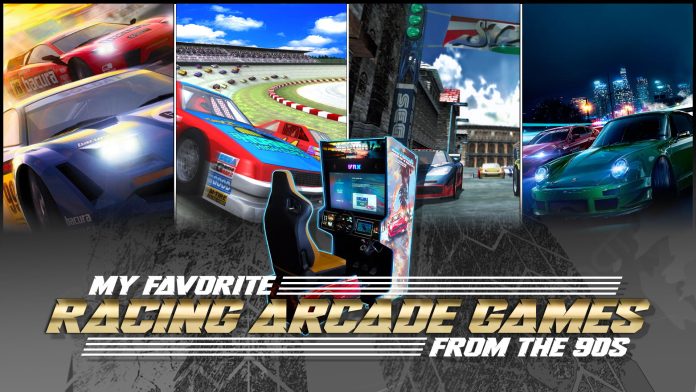In my honest opinion, arcade racing games are a dying genre, but one that defined a huge part of my gaming life. I grew up with them, and even now, I’ll drop everything to play a cabinet if I see one. Seriously, I love this stuff. Even in an age of open-world behemoths and live-service grinds, arcade racers are still one of my favorite genres.
I’ve already written about one of the modern greats, Split/Second, but now I want to rewind the clock and give some love to the classics that made me fall in love with the genre in the first place. This article is a shout-out to some of my favorite arcade racing games from the 1990s to early 2000s, games that deserve to be remembered, revisited, and maybe even discovered by a new generation of racing fans.
Let’s hit the gas and check them out.
Ridge Racer Type 4
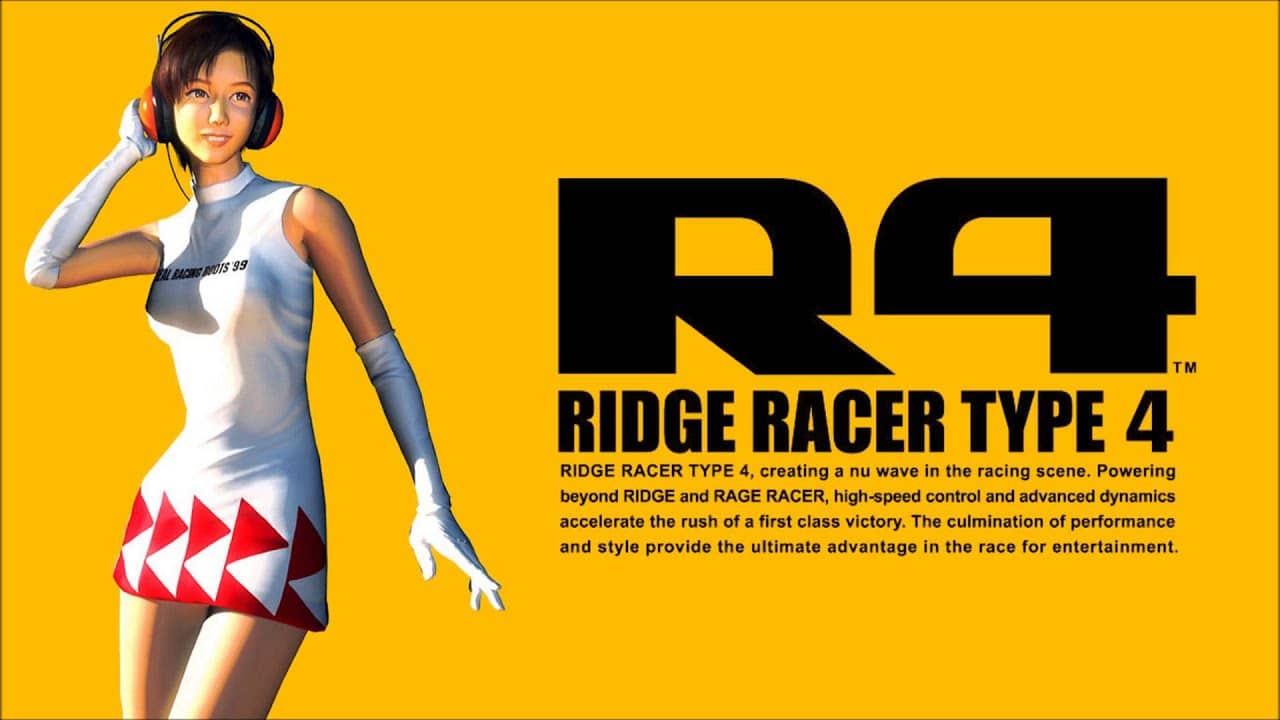
While not technically an arcade cabinet game, Ridge Racer Type 4 earns a spot on this list because it felt like the arcade, just polished, evolved, and delivered straight to your living room. Namco took everything they learned from the arcade Ridge Racer titles and crafted something truly special for the PlayStation. It was slick, fast, stylish as hell, and came with a killer soundtrack that fused jazz, funk, and electronic in a way no racing game had before.
What made Ridge Racer Type 4 stand out wasn’t just the gameplay, which was as smooth and satisfying as ever; it was the entire vibe. From the intro cinematic to the UI design, this game had flair. And the addition of teams, story paths, and dozens of unlockable cars? Yeah, it made you want to keep racing long after midnight. If you had a Namco JogCon controller, you were living in the future.
I still remember importing a copy of Ridge Racer Type 4 and the JogCon controller because there was no release date in sight for the North American version. My friends, also big Ridge Racer fans, were both windblown that importing was even a thing and absolutely pissed when I wouldn’t let them “borrow” my copy. Yeah, borrow. As in “You’ll never see it again.” I wasn’t falling for that one, not with this game.
To this day, few racers have matched what Type 4 delivered in terms of style and substance. It wasn’t just a game; it was an experience. One that still holds up remarkably well today.
Rave Racer
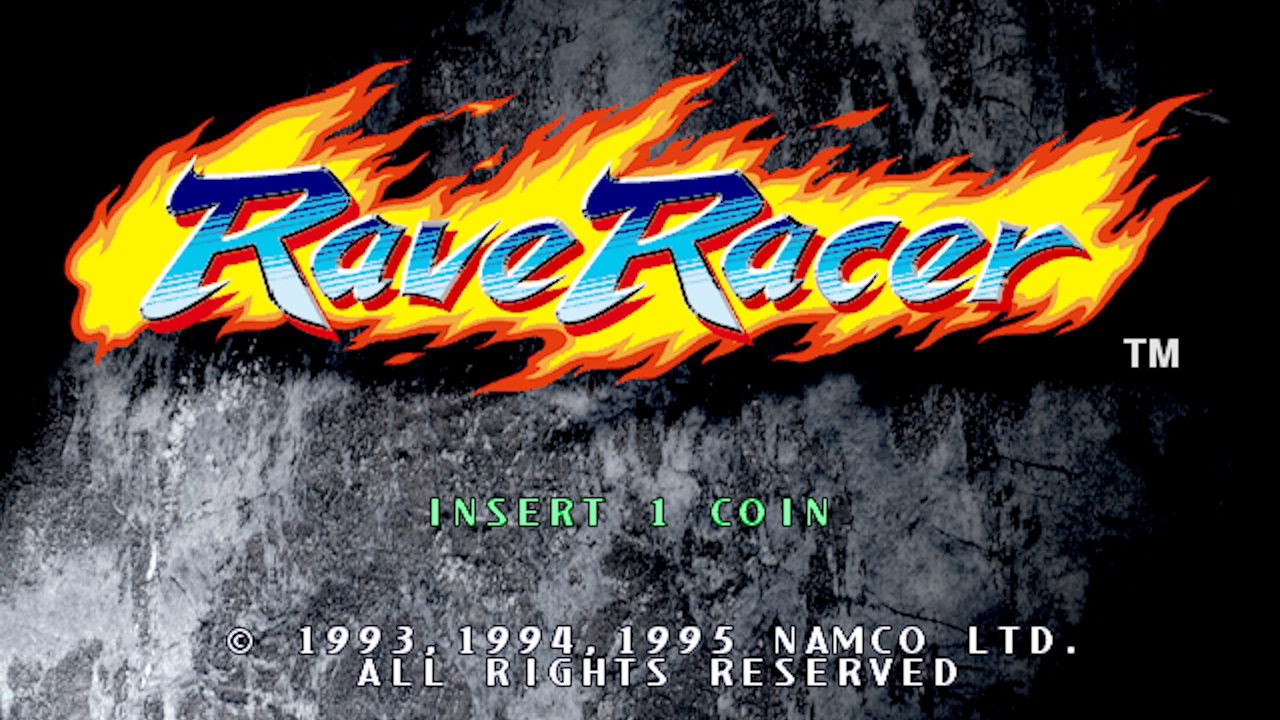
Namco’s Rave Racer stands as the crown jewel of their arcade racing lineup. As the third game in the Ridge Racer series, Rave Racer refined everything that came before it: tighter controls, deeper drift mechanics, and some of the most iconic tracks ever seen in a racing cabinet. The game featured detailed visuals for its time, thumping music, and an addictive, responsive feel that made it a mainstay in arcades for years.
Despite its brilliance, Rave Racer never got a proper home console release, which remains a crime against racing fans to this day. It’s easily Namco’s best arcade racer, and, ironically, its most overlooked. Thankfully, some of its iconic tracks and music did find a second life in Ridge Racer 2 on the PlayStation Portable, giving a new generation a taste of what made Rave Racer so special.
(Ridge Racer 2, not to be confused with Ridge Racer Revolution, which was actually the second game in the Ridge Racer series; yeah, I don’t understand it either, is now available on PlayStation 4 and PlayStation 5 thanks to PlayStation Plus.)
For me, this one’s deeply personal. I had never heard of Rave Racer before the day I stumbled across it during my time in the Army as a Military Police. I was at the on-base store and noticed the cabinet tucked away in the corner. What started as a quick test run turned into hours of intense racing. I got so locked in that I completely lost track of time, and ended up getting in trouble for not returning to the barracks. It was worth it. That game had me hooked from the jump, and I’ve carried that memory with me ever since.
Daytona USA
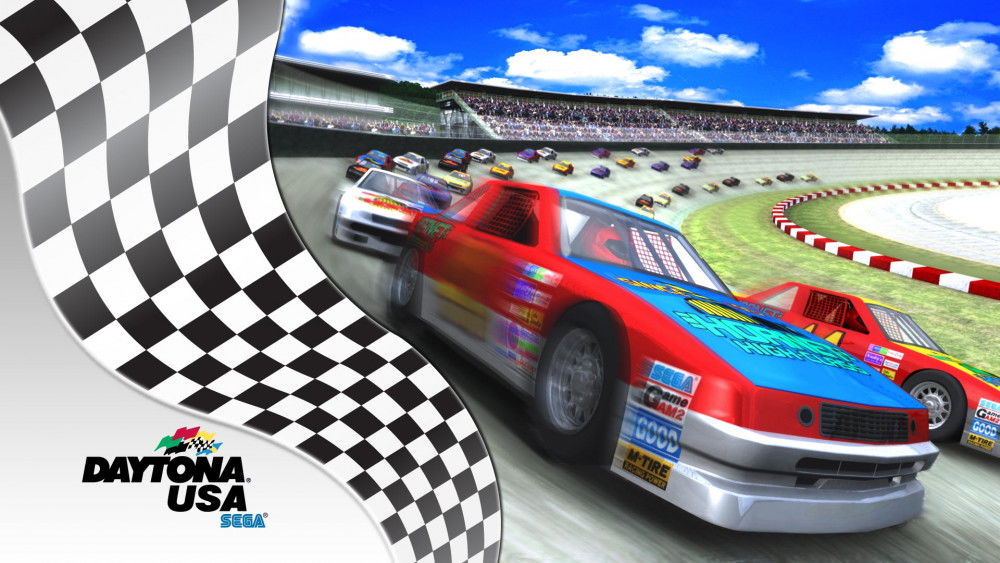
Easily one of my favorite racing games of all time, Daytona USA is the very definition of peak arcade racing. Nothing will ever replace the experience of dropping in a few quarters and going head-to-head with other players, the cabinet shaking as the bass kicked in, and the unforgettable soundtrack blaring through the speakers. That music, yeah, it’s legendary, and hearing the crew chief yell “Take it easy on the car!” mid-race just sealed the deal.
Daytona USA struck a perfect balance: easy to pick up, brutally hard to master, but always fun no matter your skill level. This was the pinnacle of arcade racing, high-octane, adrenaline-fueled, and absolutely iconic. To this day, anytime I come across a Daytona USA cab in the wild, I make it a point to drop in and give it a spin.
Sadly, many of the remaining arcade units have seen better days. Broken seats, busted wheels, no audio, faded screens, it hurts to see such a legend in that kind of shape. I’m looking at you, Dave & Busters, Main Event, and my local Farmers Market, treat these machines better than this. But thankfully, anytime I need a fix, I just boot up my digital copy on the Xbox 360 (which also runs beautifully on Xbox Series X) and race until I’ve had my fill. It’s not quite the same as the real thing, but it’s close enough to bring the memories flooding back every single time.
C’mon, who doesn’t know every song in Daytona USA?
DAAAAAYYYYYYYYYTTTTTTTTTTOOOOOOOOOOOONNNNNNNNNNNNAAAAAAAAAAAAAA!!!!!!!!!!!!!!!!!!!!!!!
Scud Race / Super Sega GT
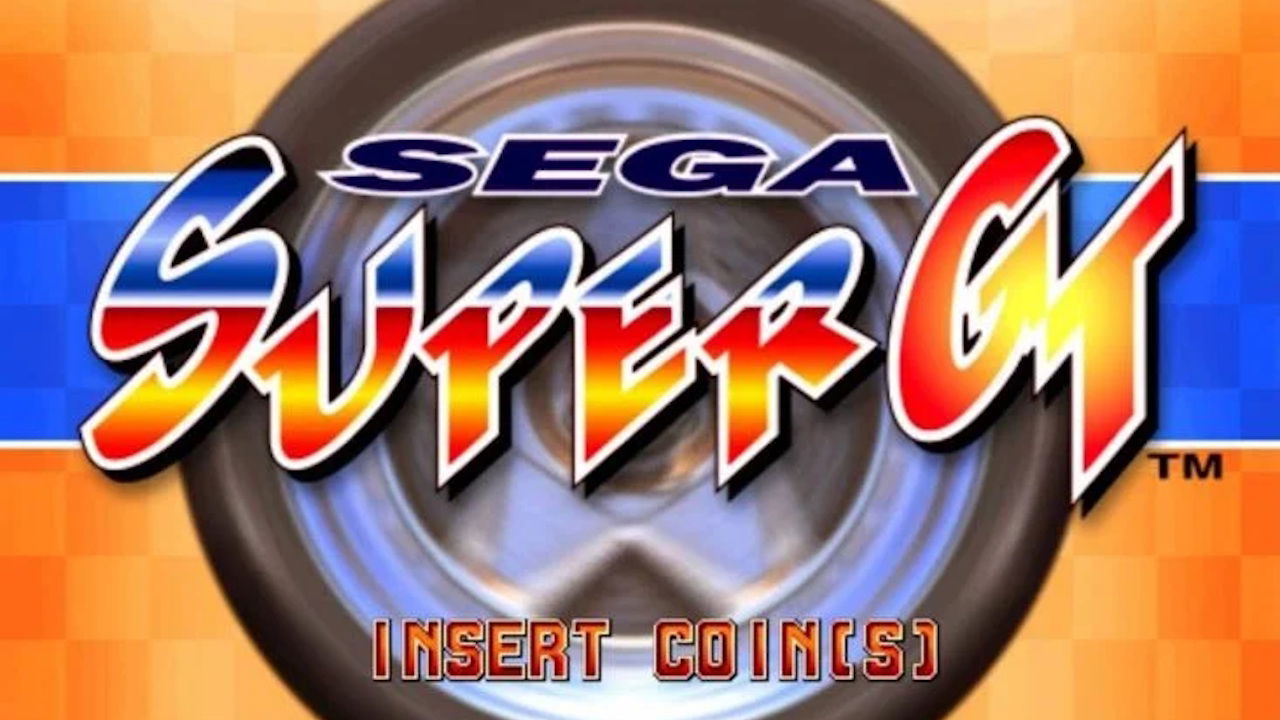
Scud Race, also known as Sega Super GT in the U.S., was Sega’s answer to the massive success of Daytona USA. It brought more advanced visuals, a diverse lineup of high-performance cars (including the Dodge Viper, which I instantly fell in love with), and that unmistakable Sega arcade energy that pumped you up before your tires even hit the track.
It took everything that made Daytona great and somehow made it even better, tighter handling, flashier presentation, and an intense sense of speed that felt more modern but just as exhilarating. And yes, the soundtrack once again slapped, pure Sega arcade magic. Unfortunately, Scud Race/Sega Super GT didn’t get the same love when it came to home consoles. While a Dreamcast version was announced and even had a tech demo in development, the game was eventually canceled. I was legitimately devastated when I found out.
Over the years, I’ve only seen the arcade cabinet in a handful of places, and it’s been decades since I last came across one in good condition. Worse still, whenever I call an arcade during my travels and ask about Scud Race, most of the time they haven’t even heard of it. It’s a shame because this game deserves to be remembered and played. Someday, I’ll find a working cabinet again, and when I do, you can bet I’ll be dropping quarters like it’s the late 1990s all over again.
This is one of those games I’d absolutely purchase if I had both the funds and the space to house the arcade cabinet.
OutRun 2006: Coast 2 Coast
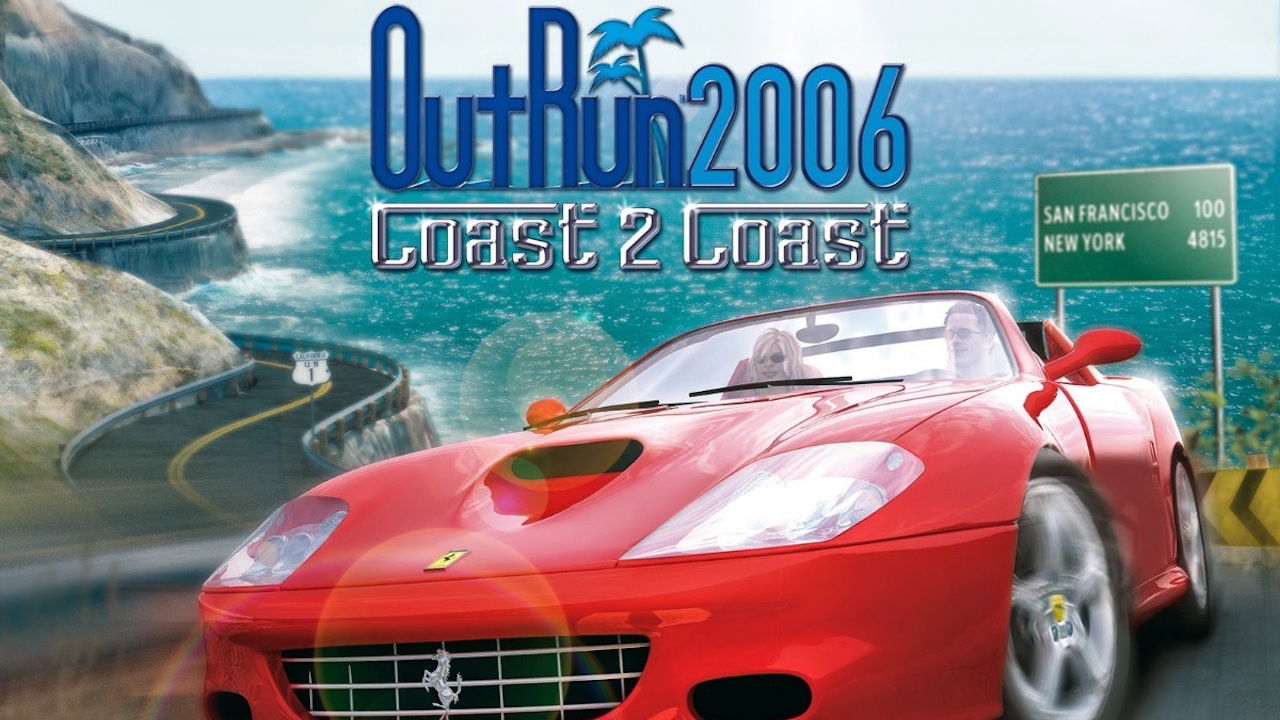
OutRun 2006: Coast 2 Coast is what happens when Sega blends nostalgic arcade DNA with modern sensibilities and just lets the vibes flow. It’s fast, vibrant, stylish, and packed with heart-pounding races through sun-drenched beaches, European cities, and scenic mountain passes. The drifting feels smooth as butter, the sense of speed is phenomenal, and the music? Classic Sega, catchy, uplifting, and perfect for high-speed joyrides.
What really sets Coast 2 Coast apart from the original OutRun is just how much more it gives you to do. You’ve got multiple game modes, including OutRun Mode, Time Attack, and Heart Attack Mode, where you complete challenges to impress your passenger. There’s also a full Coast 2 Coast career mode that takes the arcade experience and expands it into something much meatier for home players. And don’t forget the licensed Ferrari vehicles, which looked gorgeous and handled beautifully for the time.
The game was released for the PlayStation 2, the original Xbox, and PC. While it didn’t make as big of a splash at launch, it’s become a rare gem over the years. Since it’s long out of print, finding a copy today is a mission, and if you do track one down, it’ll likely cost you an arm and a leg. Thankfully, I got lucky. Someone clearly didn’t know what they had and sold me the Xbox version for cheap. I snatched it up without hesitation.
Interestingly, Coast 2 Coast was also released on PC, and as of now, it’s considered abandonware. That means it’s easier to acquire through unofficial channels, though legal availability is practically nonexistent. Still, for those who want to experience one of the finest arcade racers without shelling out collector-level prices, the PC version has become a go-to option.
To this day, it remains one of the slickest and most satisfying arcade racers ever released on a home console. If you’ve never played it, hunt it down, you won’t regret it.
Need for Speed: Hot Pursuit 2
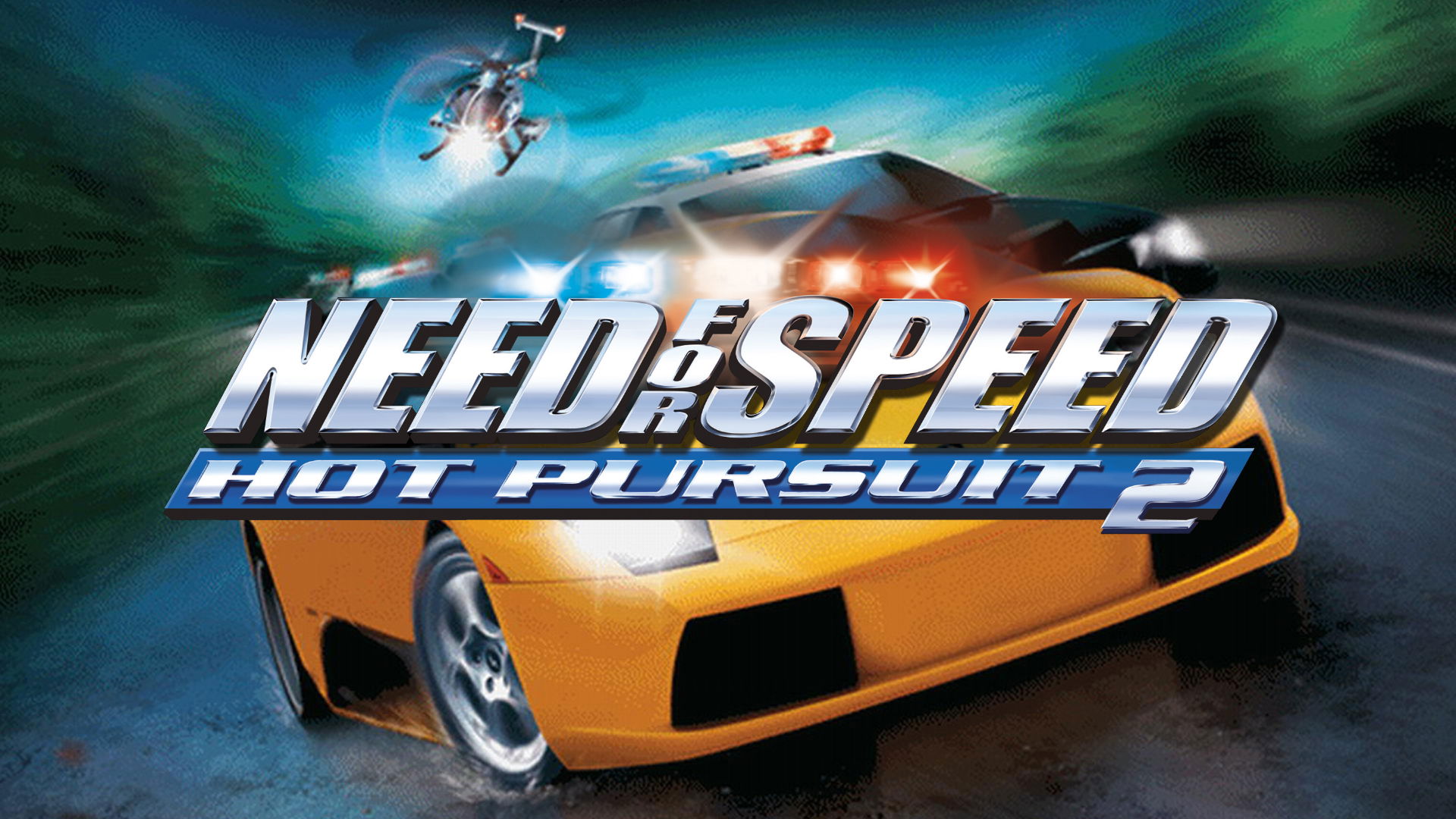
Need for Speed: Hot Pursuit 2 is another console-based arcade racing game, especially since the Need for Speed series was never a true arcade title in the traditional sense. Released in 2002 for the PlayStation 2, GameCube, Xbox, and PC, it marked a turning point in the NFS series. It wasn’t just a sequel, it was a full-on love letter to speed, chaos, and outrunning the law in the fastest exotic cars on the planet.
Whether you were racing to the finish line or dodging spike strips with a Ferrari 360 Spider, every moment was filled with adrenaline. The gameplay was smooth, responsive, and packed with that classic arcade thrill that Need for Speed was known for.
What really made Hot Pursuit 2 click was its perfect balance of fun, speed, high-stakes police chases, and a killer soundtrack. The cars felt powerful yet easy to control, the police AI was aggressive without being frustrating, and the music gave every pursuit a pulse-pounding intensity. On top of that, unlocking new cars and challenges added a reason to continue playing the game after the first few races.
The tracks were sprawling and scenic, taking you through coastal highways, forests, mountain passes, and desert roads. Every location felt distinct, and they were designed to give players a sense of speed and danger at every turn. Add in weather effects, although it was limited to Sunny and Overcast, and alternate routes, and you had a game that encouraged repeat playthroughs just to see what you missed.
F-Zero GX / F-Zero AX
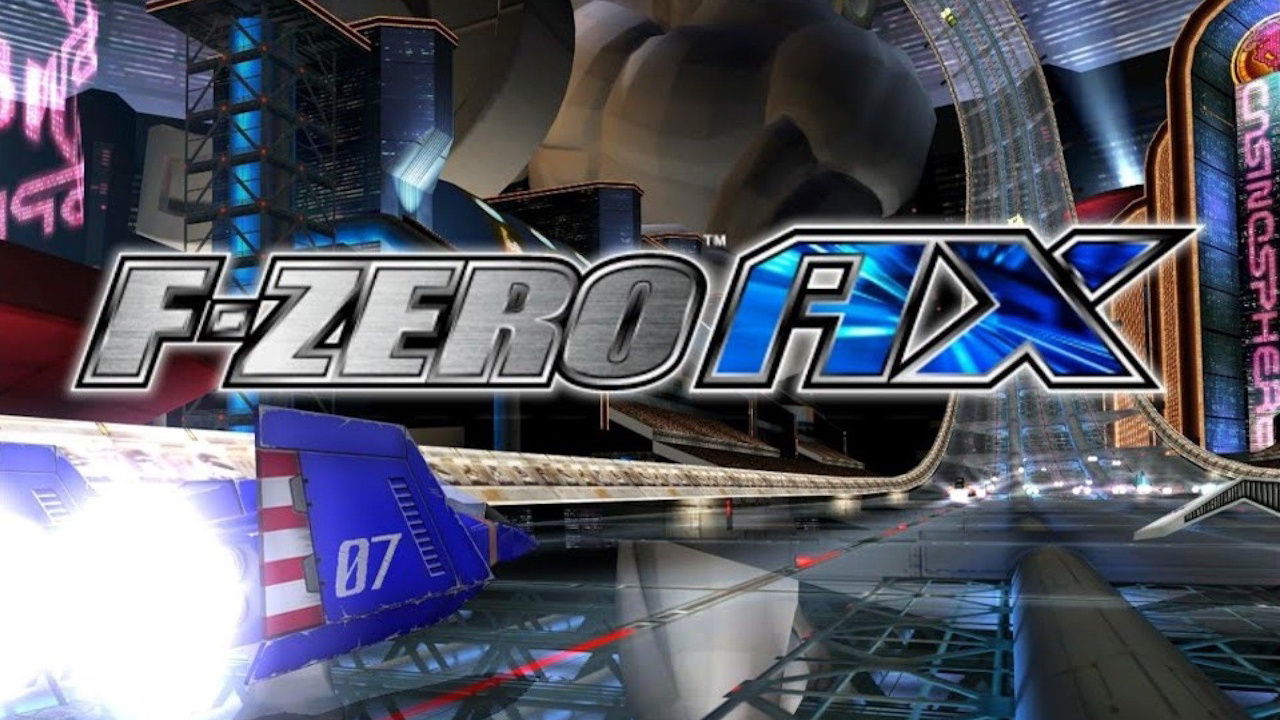
If you’ve played F-Zero GX, then you already know. The game didn’t just feel fast, it felt dangerous. Tracks flew by at insane speeds, the camera clung to every tight corner, and one wrong move could send you spiraling off the course. You weren’t just driving, you were piloting a machine on the edge of control, and I loved it!
A huge part of that was thanks to SEGA’s involvement. This was a company with serious arcade racing chops: Daytona USA, Scud Race, and OutRun. They knew what made a racing game feel right. Combine that with Nintendo’s F-Zero universe and characters, and the result was magic. The controls were tight, the mechanics were razor-sharp, and the difficulty curve? It was absolutely brutal, and it didn’t care if you were a first-timer or not. It chewed you up and spat you out. And I loved every second of it. So did a lot of other people. Any arcade I walked into that had the two-seater F-Zero AX machine was always packed.
F-Zero GX wasn’t just a great F-Zero game. It was a masterclass in arcade racing. Fast, stylish, intense, and unapologetically hard. It captured everything I love about the genre and did it better than almost anything that came before or after. And even though you won’t find it in arcades anymore, I’m lucky. I still have my original copy of F-Zero GX and a GameCube that quietly waits in the shadows until the urge hits me again. And every time it does, I remember exactly why I fell in love with this genre in the first place.
Now if that damned F-Zero GX remaster rumor would finally stop teasing me and actually happen, that’d be great.
Sega Rally Championship
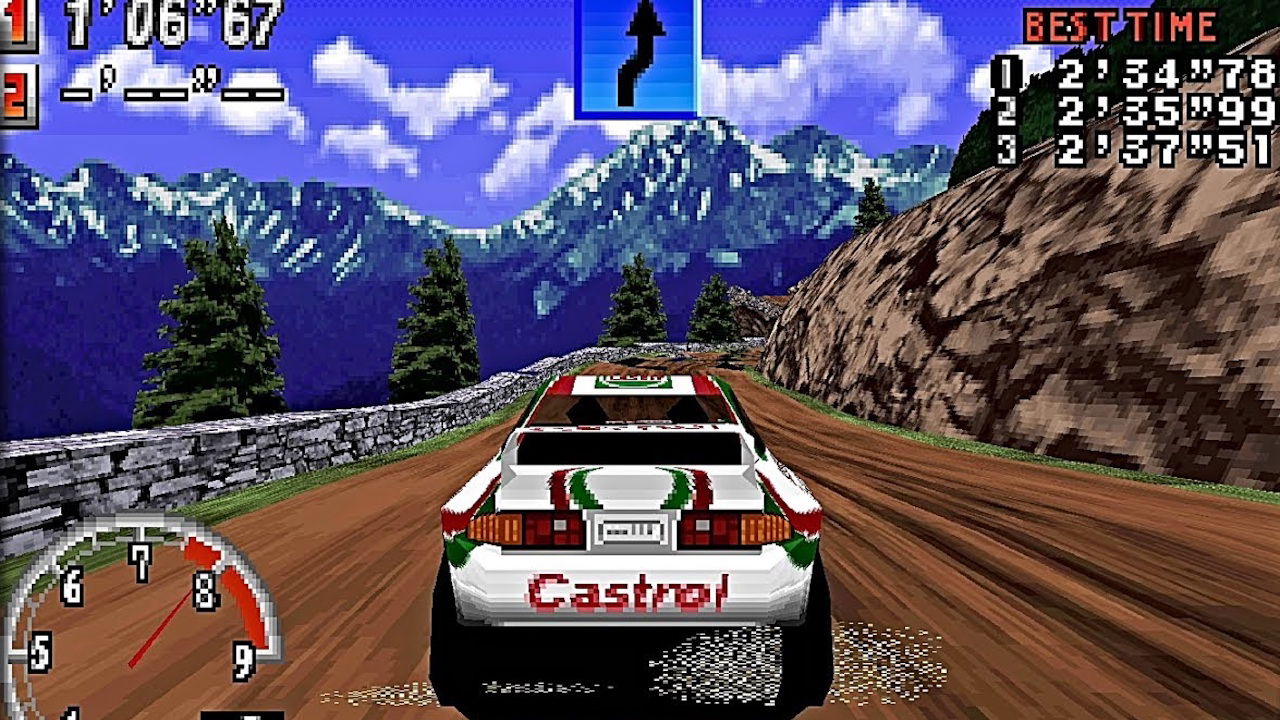
GAME OVER, YEAH!!!!!!!!!!! If anything, this is what most gamers remember from playing Sega Rally Championship. That, and the absolutely fire soundtrack that kicked in during the replay as you watched yourself drift like a rally god around a dusty corner. Sega Rally Championship was one of the greatest arcade racing games ever made, and for good reason.
Unlike Daytona USA or Scud Racer / Sega Super GT, which were all about racing on paved tracks, Sega Rally threw you into the chaos of off-road racing. Dirt, gravel, mud, you were battling the terrain. Each surface actually affected your handling, something revolutionary at the time for arcade racers. The cars didn’t just slide for show, they behaved differently depending on where you were driving. That sense of control, or lack thereof, gave the game a level of realism, while still being an arcade racer, that made it unlike anything else.
And let’s talk about the music again. Oh man, that music. If there was ever an argument for why CDs were a game-changer for gaming audio, Sega Rally Championship is it. The soundtrack, composed by Naofumi Hataya and Takayuki Hijikata, was bliss. The forest and desert stage replay themes are permanently engraved in my brain.
I played this game so damned much on the Sega Saturn. It wasn’t an exact port of the arcade version, but it was close enough, and even ran faster. Ironically, I never even saw the arcade cabinet growing up, but the home version was more than enough for me.
Sega Rally Championship wasn’t just a game, it was an era. One that proved SEGA could nail more than just tarmac and speedway loops. It also paved (pun intended) the way for everything from Colin McRae to Dirt.
Daytona USA 2: Battle on the Edge
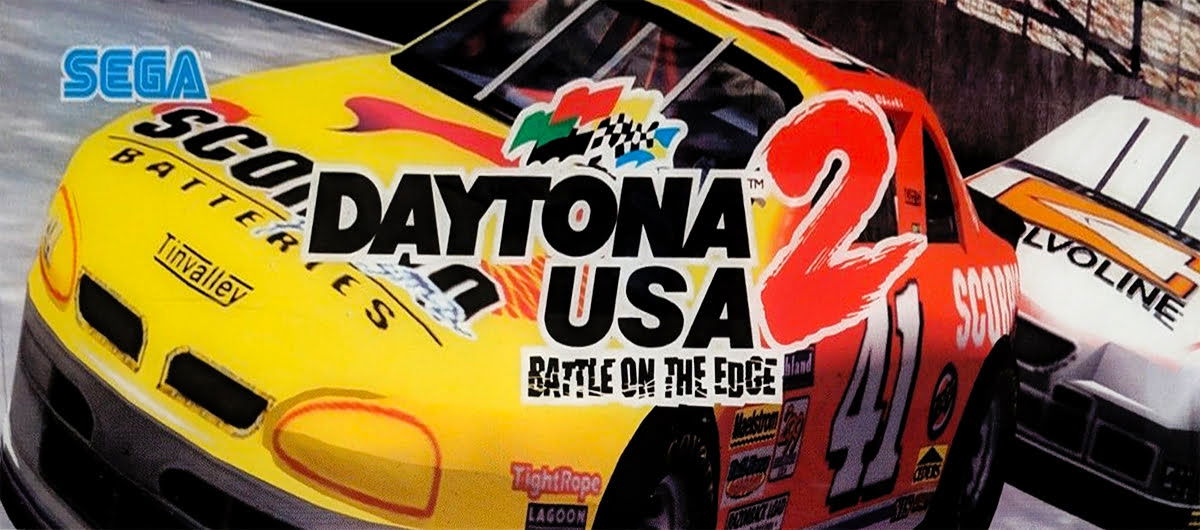
Daytona USA 2: Battle on the Edge is another arcade racer that never left my memory, and honestly, it deserved way more love than it got. Released in 1998 by SEGA-AM2, this was the long-awaited sequel to Daytona USA, and it hit harder in almost every way. Built on SEGA’s powerful Model 3 hardware, it looked incredible for its time and still holds up surprisingly well today.
From the moment you sat down in that cabinet, you could feel the difference. The handling was tighter, the speed was faster, and the addition of real racing techniques like slingshot passing gave it a more tactical feel. It still had the heart of an arcade racer, but with a slightly more serious stock car edge that made it stand out.
There were more tracks, more cars, and just enough challenge to keep you coming back. The drifting felt dialed in, and every machine handled a little differently depending on the difficulty setting.
Audio-wise, Daytona 2 brought the heat. The engine sounds, tire squeals, and crashes were all crisp. If you were lucky enough to play a machine with surround sound, it was even better. Every impact, every scrape, it all had weight. The soundtrack was a shift from the original game’s quirky vocals. Gone were the cheesy sing-alongs, replaced with hair metal and hard rock that just fit the vibe. The American version featured Dennis St. James. I never had the pleasure of playing the Japanese version with Takenobu Mitsuyoshi’s unmistakable vocals, but I do have the soundtrack, and both versions sound amazing.
It’s honestly a shame this is yet another SEGA arcade racer that never got a proper console release. This was one of SEGA’s best arcade racing games. It took everything that made the original iconic and turned it up to eleven.
So there you go, an insight into my younger years and a handful of arcade racing games that not only kept me entertained for hours, but also sparked my interest in cars and, well, going fast. And yes, you may have noticed there are a lot of Sega games in the list, and for good reason. Sega was pretty much the pioneer when it came to arcade racing during the 1980s – 2000s.
Sadly, these games are products of a bygone era. While you still see some arcade racers popping up, mostly from indie developers, the genre is circling the drain. Still, while they’re around, I highly recommend giving them a shot. Who knows? You might end up loving them, and maybe even help one of my favorite genres make a comeback.
But before I go, let me leave you with one recommendation: Hotshot Racing, an arcade racing game that was released a few years back for PC, PlayStation 4, Xbox One, and Switch. It’ll definitely scratch that arcade racing itch, or give you one if you’ve never played a game like it before.
